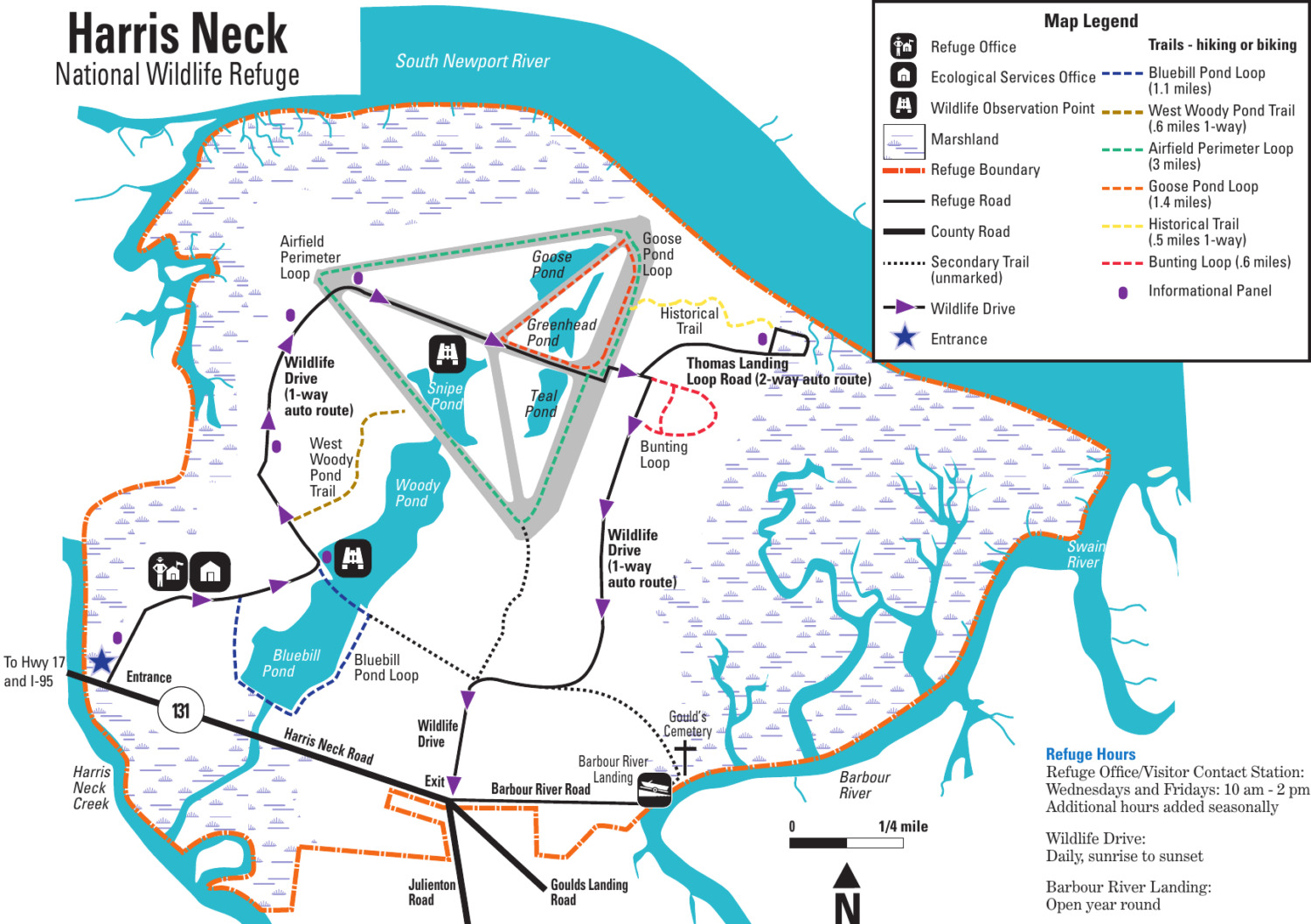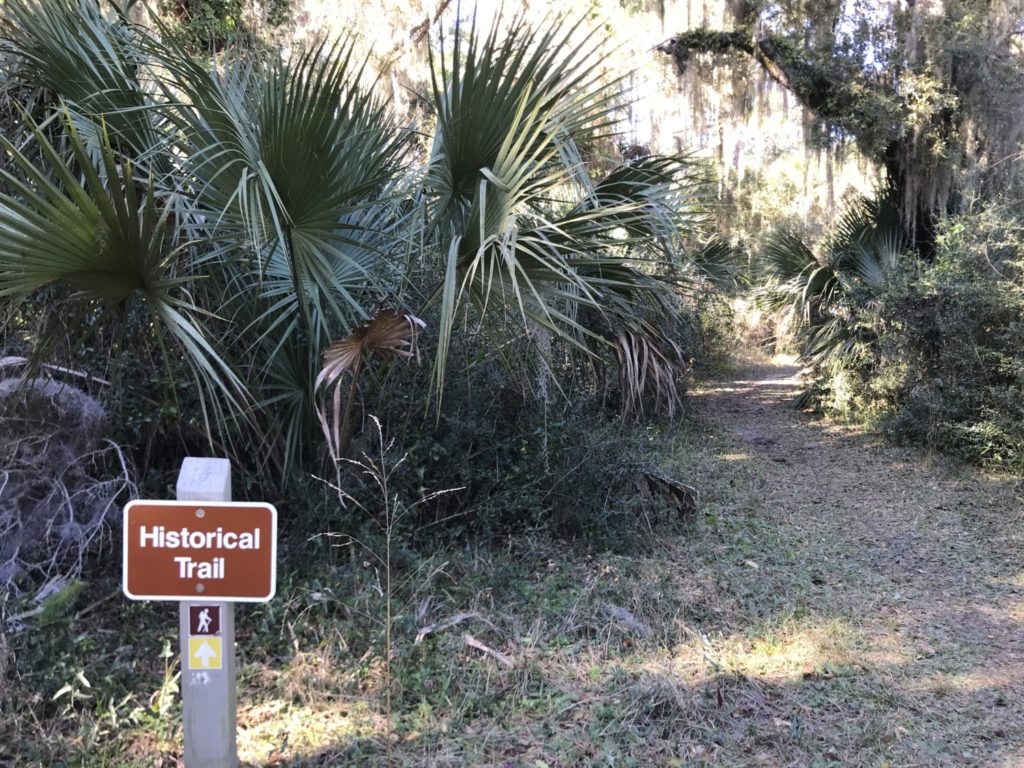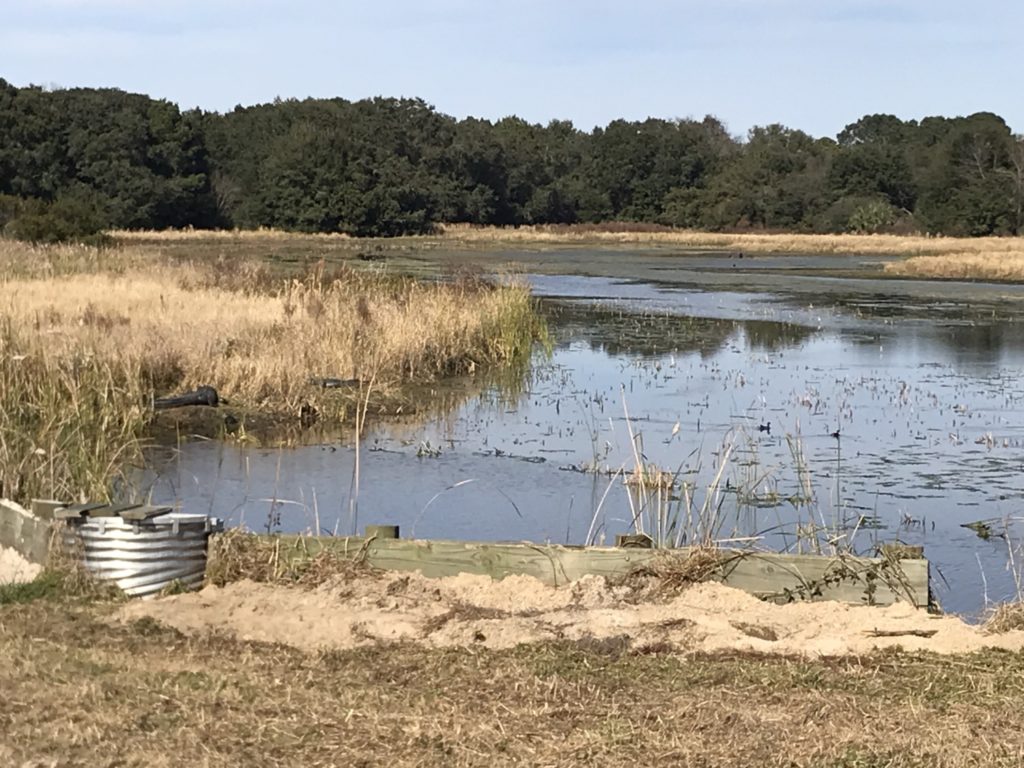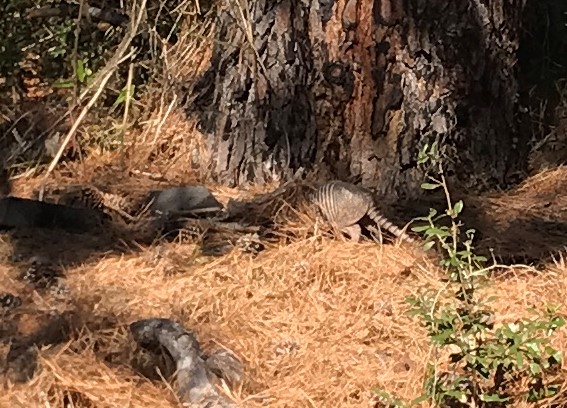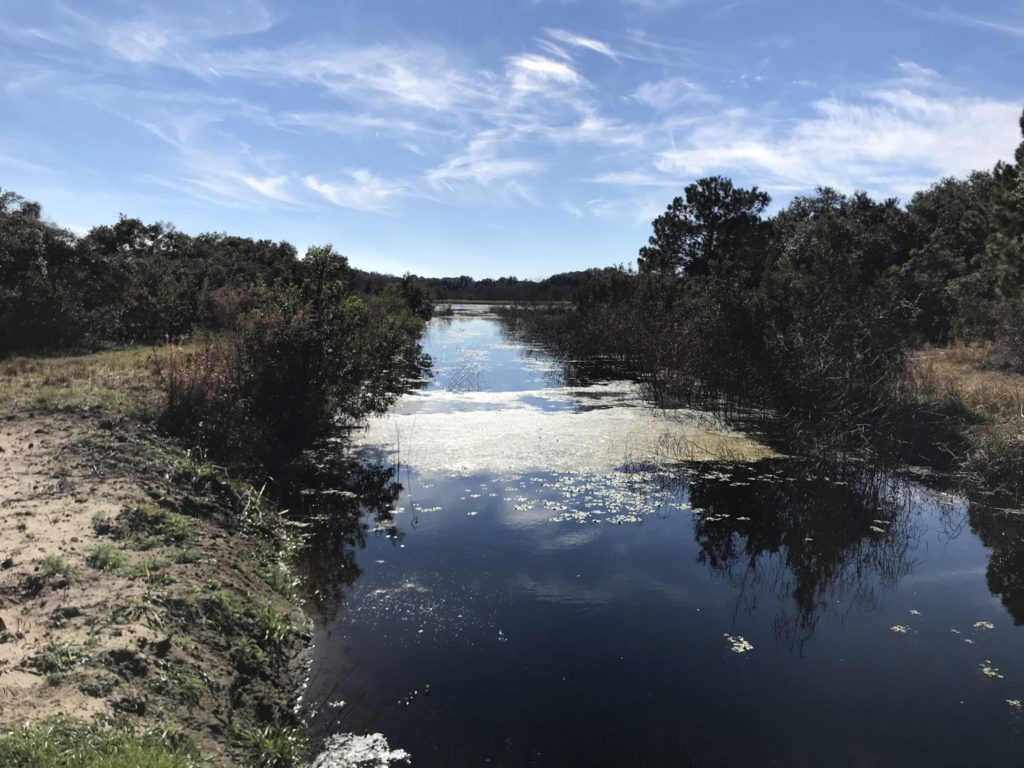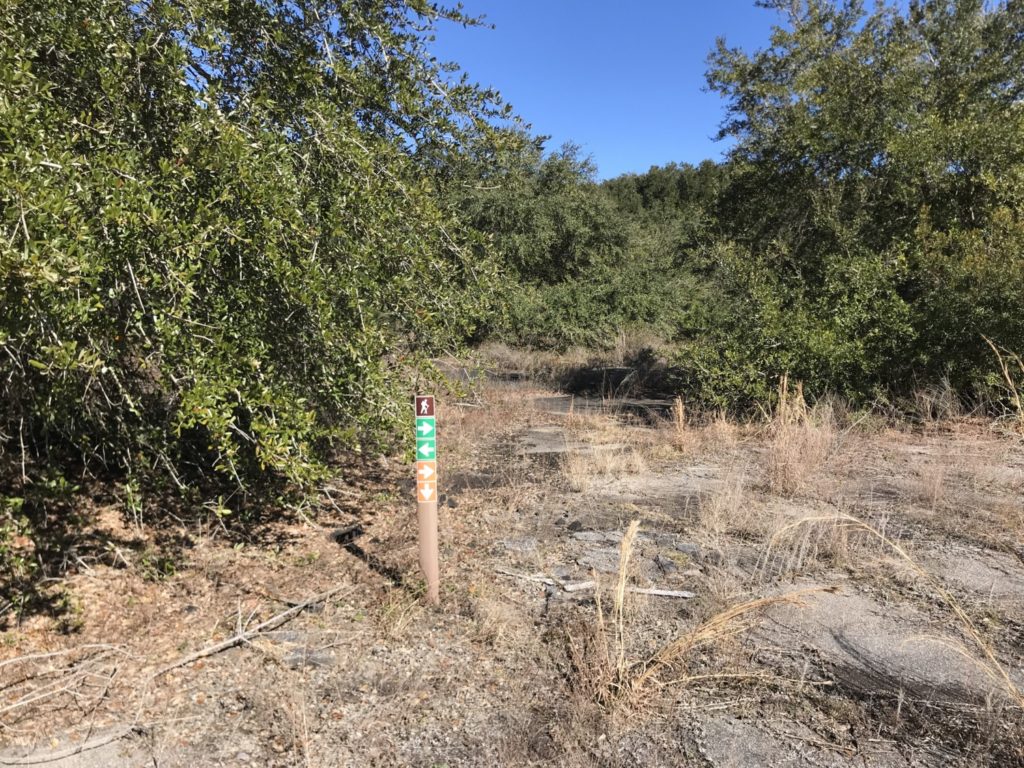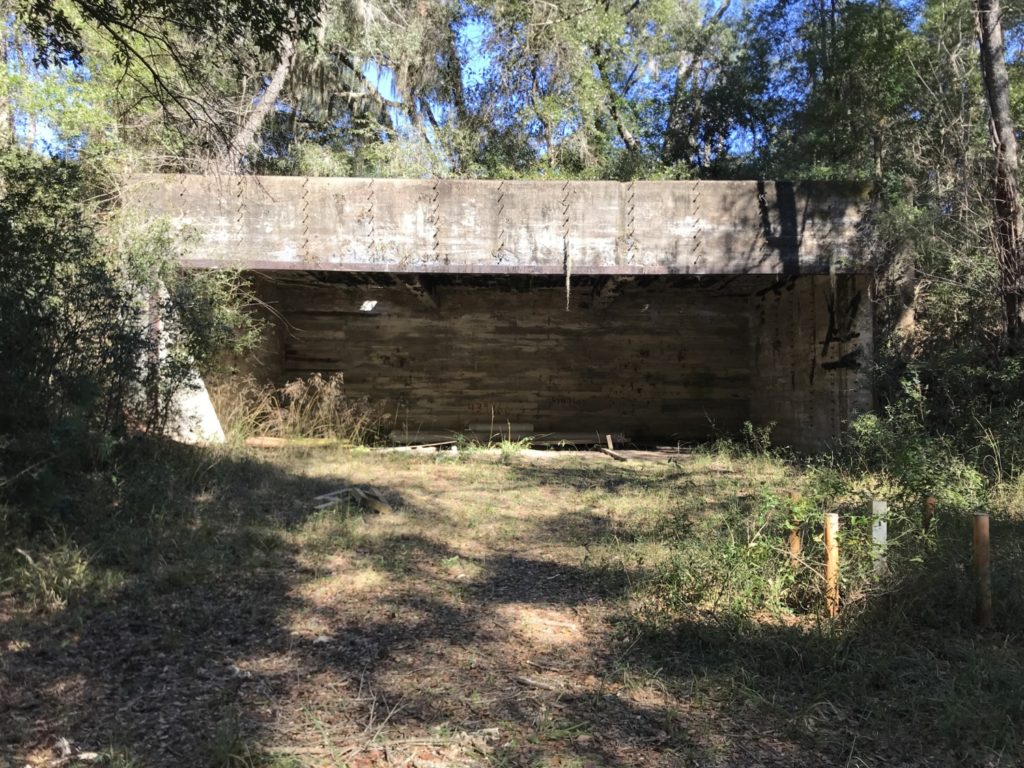Last week Tom and I spent an afternoon exploring the Harris Neck National Wildlife Refuge. Because we are usually so focused on National Park sites, visiting wildlife refuges administered by the US Fish and Wildlife Services is secondary on our list. But we have hit all the coastal National Park sites from Charleston, South Carolina, to St. Augustine, Florida, so we are exploring some other places this year.
Harris Neck National Wildlife Refuge is part of the Savannah Coastal Refuges Complex. This complex is made up of 57,000 acres along 100 miles of coastline. Six National Wildlife Refuges make up the complex. The refuges are set aside to conserve America’s fish, wildlife, and plants, although hunting of deer and feral hogs is allowed at Harris Neck.
Tom and I went to Harris Neck National Wildlife Refuge on a Wednesday because the website said the Visitors Center was open from Wednesday through Sunday. But, when we arrived, we found out the Visitors Center has been closed since March 2020. We picked up a brochure from a kiosk outside and headed off on the wildlife loop road drive. This lovely road is one way through most of the refuge. Trails branch off at various points along the road.

Harris Neck has about eight miles of trails. Tom and I decided to make a loop out of the Historic Trail and the Airfield Perimeter Trail – about four miles. It was a beautiful afternoon, sunny and in the 60’s. The Historic trail wandered by the remains of the Lorillard estate. The trail ended at the remains of an airplane hangar. We crossed the loop road and then picked up the Airfield Perimeter Trail. The perimeter trail is the remains of three runways from World War II Harris Neck Army Airfield. We saw lots of wildlife, including three alligators, an armadillo, and six wood storks.
Harris Neck Wildlife Refuge has a long, inhabited history in the area. The Guale tribe of Native Americans lived in the area until the 1660’s, when encroachment from the British in South Carolina forced them to move south to St. Augustine. Once slavery was allowed in Georgia in 1750, Harris Neck became the Peru plantation. The Peru family raised Sea Island cotton beginning around 1800 and enslaved people were forced to work on the land.
After the Civil War, the Peru family subdivided the plantation into 171 lots which it sold to the emancipated African Americans. A thriving Gullah community developed on Harris Neck. Residents lived off the land and waterways and preserved traces of their native African culture and language. The community included churches, cemeteries, a school, lodges, and various businesses including the Timmons Oyster Factory, Ethel’s Store and E.W Lowes’ Store. Individuals grew corn, potatoes, cane, and fruit trees. Many in the community worked in the commercial fisheries or on farms. Others were employed as teachers, carpenters, brick masons, seamstresses, and nurses.

When World War II broke out, the U.S. Government filed condemnation proceedings for tracts on the north end of Harris Neck to establish an Army Airfield. The airfield’s construction destroyed much of the original Harris Neck Gullah community. The residents were paid a few dollars per acre for their land but nothing for their homes or businesses. They were given three weeks to get off their land. The government promised that the land would be returned to them when the war was over. The site served as a gunnery training facility for World War II fighter pilots serving in Europe.
Instead of the land being returned to residents after the war, the War Assets Administration transferred the 2,687 acres to McIntosh County. In 1962 the land was transferred back to the U.S. Government for a wildlife refuge. Former residents of Harris Neck, and descendants of those residents, have been trying various ways to get their land restored, or be paid reparations, ever since. In October 2020, the Direct Descendants of Harris Neck Community and the U.S Fish and Wildlife Service signed a Memorandum of Understanding to solidify their commitment to collaborate on mutually beneficial projects and land use.
Although the history of Harris Neck Wildlife Refuge bothers me, Tom and I enjoyed our afternoon hiking around and seeing the beautiful coastal area. The Refuge is a wild gem that allows hiking and wildlife along an increasingly developed coastline.

